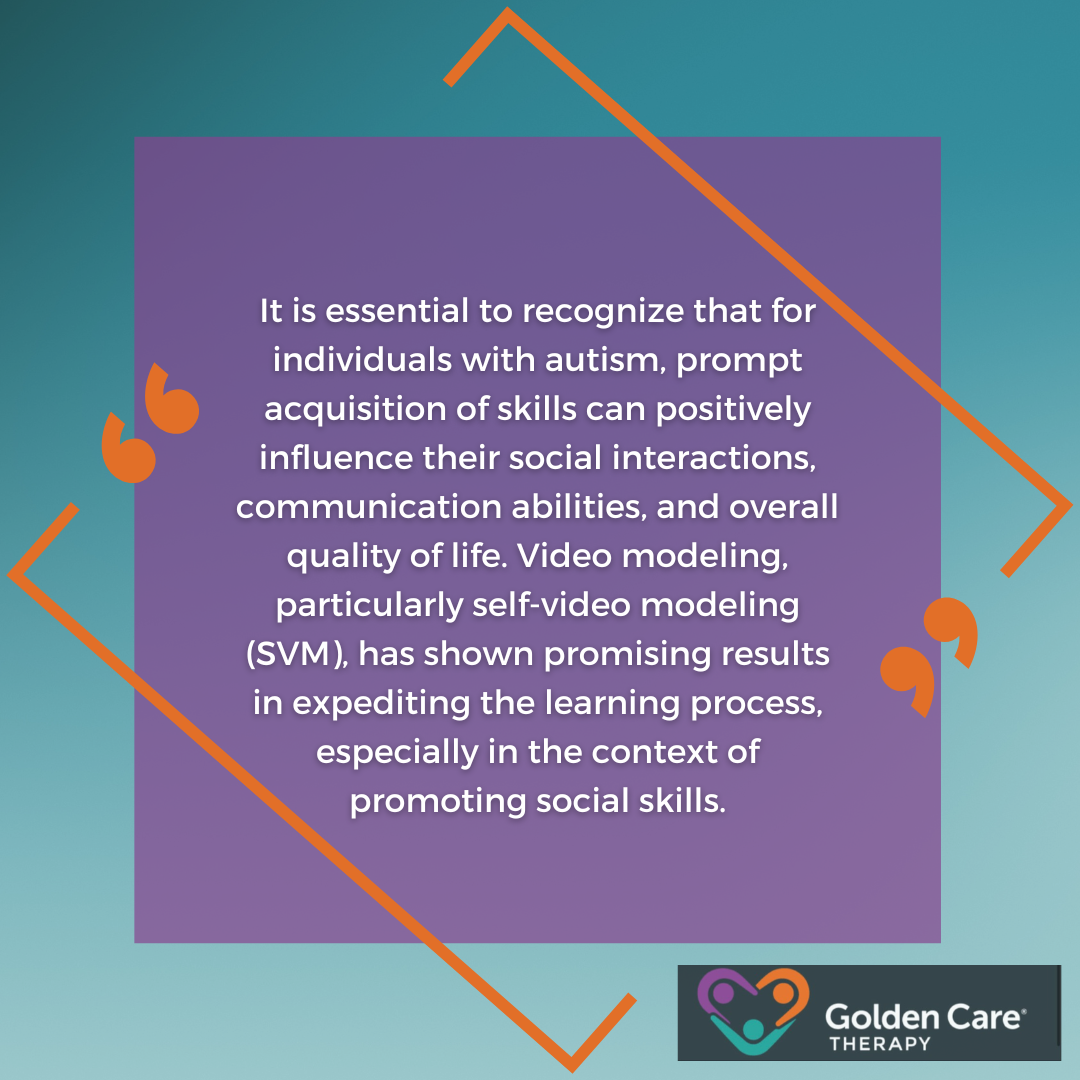
Table of Contents
Video modeling offers a dynamic approach to teaching and supporting individuals with autism. By using video to demonstrate various skills and behaviors, learning becomes engaging and accessible for them.
Whether it’s teaching social interactions, daily routines, or specific tasks, video modeling provides clear and visual examples that can be easier to understand and replicate.
This technique harnesses the power of visual learning to support and enhance the development of essential skills in a way that’s both effective and adaptable.
Here, we’re going to look at the effectiveness of video modeling for autistic individuals.
What is Video Modeling?
Video modeling stands out as a tried and tested approach within the realm of ABA therapy for individuals with autism. By presenting visual demonstrations of desired behaviors and actions, video modeling offers a structured and repetitive method for individuals to learn and replicate these behaviors.
The visual nature of video modeling can be particularly beneficial for autistic individuals who may respond well to visual cues and structured learning environments.
One study focused on tasks related to social interactions, including engaging with a salesperson during a purchase, initiating and maintaining conversations with peers, and participating in enjoyable activities with peers.
Through the use of video modeling, individuals with high-functioning autism demonstrated significant improvements in task acquisition and social skills development.
The Effectiveness of Self-Video Modeling (SVM)
Self-video modeling (SVM) is a particularly effective technique in the field of video modeling for autism.
According to studies, the implementation of self-video modeling (SVM) has yielded promising results in the realm of autism therapy. Individuals with high-functioning autism who engaged in SVM exhibited a faster and more accurate execution of social tasks when compared to traditional methods.
The use of SVM in therapy sessions has shown to enhance task acquisition and improve interaction skills in individuals with high-functioning autism.
A recent study focused on comparing the efficacy of self-video modeling (SVM) versus peer video modeling (PVM) in teaching social tasks to individuals with high-functioning autism revealed notable differences in task acquisition times between the two groups.
Subjects utilizing SVM showed quicker and more precise task execution, particularly in tasks that require social interactions, such as engaging with a salesperson, initiating conversations, and participating in peer activities.
The data from the study underlines the superiority of SVM over PVM in facilitating rapid task acquisition, especially in the context of social skill development among individuals with high-functioning autism. By leveraging the power of self-video modeling, therapists and caregivers can effectively enhance the learning experience and social skills of autistic individuals.
Rapid Task Acquisition
The speed at which autistic individuals acquire new skills is crucial in their development. Rapid task acquisition plays a vital role in promoting social skills and overall communication abilities.
Video modeling has emerged as an effective tool in facilitating this rapid learning process.
Needless to say, the speed at which individuals grasp and apply new skills can significantly impact their progress and overall success. Rapid task acquisition allows for more efficient learning, leading to quicker integration of essential social behaviors into daily interactions.
The ability to swiftly acquire tasks not only boosts confidence but also enhances the individual’s readiness to engage in social settings.

Also, the promotion of social skills is a key objective in autism therapy, as individuals with autism often face challenges in social communication and interaction. By facilitating rapid task acquisition through video modeling techniques, the acquisition of social skills can be accelerated, helping individuals with autism navigate social situations more effectively.
The ability of SVM to enhance the rapid acquisition of social tasks, as compared to peer video modeling (PVM), showcases the potential of video modeling techniques in addressing the unique needs of individuals with autism.
The Bottom Line
Video modeling offers a dynamic approach to teaching and supporting individuals with autism. By using video to demonstrate various skills and behaviors, this method makes learning engaging and accessible.
Whether it’s teaching social interactions, daily routines, or specific tasks, video modeling provides clear and visual examples that can be easier to understand and replicate.
This technique harnesses the power of visual learning to support and enhance the development of essential skills in a way that’s both effective and adaptable. For families seeking tailored support, explore our ABA Therapy in Indiana, New Jersey, Georgia, and New York. To find out how we at Golden Care Therapy can assist you, contact us today for personalized guidance and support.
Sources:
- Video Modeling and Its Impact on ABA Learning - September 27, 2024
- Strategies for Teaching Turn-Taking in Autism - September 27, 2024
- Understanding Social Boundaries in Autism - September 27, 2024
